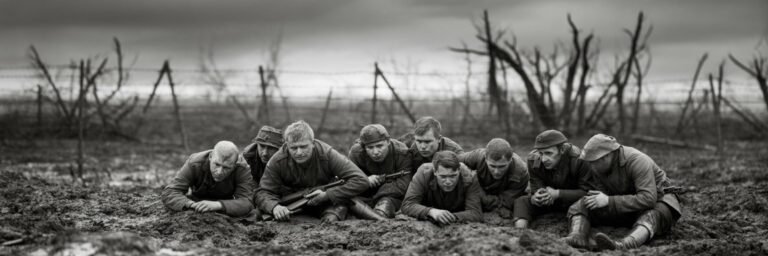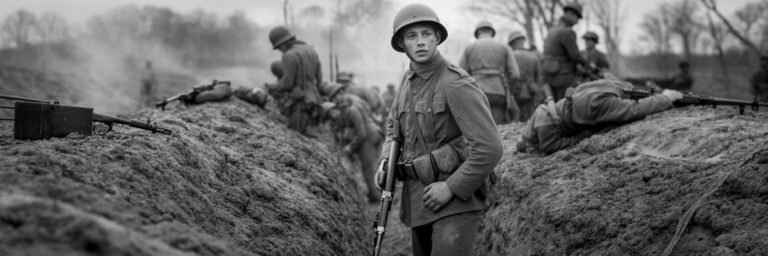The gripping saga of World War I, better known as the Great War, imbued with poignant episodes of victory, defeat, valor, and tragedy, was momentous on a global scale. Weaving a rich tapestry of political intrigue, strategy, and human suffering, the cataclysm altered the course of human history. However, it is its spectacular collapse, as profound as its commencement, which is a matter of intense scholarly interest and speculation.
The lessons learned and the scars inflicted by this deadly war are enormous in their scope – a testament to the futility of such paralyzed destruction and mass genocide. Understanding what led to the demise of World War I necessitates a deep dive into its complex causality, theories and interpretations, controversies that surround it, its symbolism and cultural significance, and the modern investigations and findings that have shed new light on the subject.
HISTORICAL BACKGROUND
Emerging from the ashes of indistinct nationalistic intentions, geopolitical ambitions, and primal lust for supremacy, World War I rapidly escalated to affect major world powers. It revolved around two primary alliances, with Central Powers including Germany, Austria-Hungary, Ottoman Empire and Bulgaria, pitted against Allied Powers encompassing France, United Kingdom, Russia, Italy, Japan, and the United States which joined in 1917.
Marked by horrendous trench warfare, technological innovations like the use of tanks, chemical warfare, and aircraft, the death toll of The Great War, which lasted from 28 July 1914 to 11 November 1918, is estimated at around 40 million. But what precipitated the downfall of this man-made catastrophe?
THEORIES AND INTERPRETATIONS
There is no single reason that captures the complexities surrounding the collapse of World War I. However, several expert analyses and theories have tried to present plausible explanations.
The seminal work of Fritz Fischer, a German historian, in his book ‘Germany’s Aims in the First World War’, portrays Germany’s escalating internal issues and economic straits as instrumental in the country’s decision call for an armistice.
Another prominent interpretation, presented by David Stevenson in ‘Cataclysm: The First World War as Political Tragedy’, underscores how Allied naval blockades crippled Germany’s resources. Stevenson emphasizes the United States’ entry into the war as a significant game changer, tipping the scale in favor of the Allied Powers.
Paul Kennedy, in his widely acclaimed work ‘The Rise and the Fall of the Great Powers’, proposes a more balanced geopolitical analysis. He argues that internal dissensions within Central Powers and their military stagnation, combined with escalating pressure from the Allied Powers, precipitated the inevitable collapse.
MYSTERIES AND CONTROVERSIES
Despite consensus on broad factors that led to the collapse, several controversies continue to spark debates among historians.
Mystery shrouds the role of the German High Seas Fleet. Its scuttling at Scapa Flow post the armistice is considered pivotal yet controversial. While some historians view it as a cowardly act of self-destruction, others perceive it as a defiant act against peacetime reparations.
Another controversy revolves around the role of Mutinies, particularly the French Army Mutinies. Some theorists believe that despite being suppressed, they had a lasting impact on military morale, indirectly contributing to the collapse.
SYMBOLISM AND CULTURAL SIGNIFICANCE
World War I was a crucible of the modern age, symbolizing the end of age-old aristocratic and imperial orders. The map of Europe was redrawn; monarchies tumbled, democracies and Communist regimes formed.
The conflict is often seen as the symbolic breach between the “old world” and the “modern world”. Its cataclytic fall was a tragic reminder of human ability to generate self-destruction and annihilation.
MODERN INVESTIGATIONS
Recent investigations employ data analysis, GIS mapping, and other modern technologies to understand better why World War I collapsed when it did.
For instance, research at the University of Oxford used climatological data to propose that extremely wet conditions in July–August 1918 on the Western Front accelerated the end. Others, such as historian Holger Afflerbach, have re-emphasized the role of Germany’s failing economy using new quantitative techniques.
LEGACY AND CONCLUSION
World War I, and more importantly, its collapse, left an indelible legacy on the choices made by nations henceforth. It led directly to World War II, shaped the creation of the United Nations, and fundamentally altered geopolitical alignments.
Its cultural significance remains reflected in every aspect of human society, from literature to politics. From Winston Churchill to Erich Maria Remarque, writers, thinkers and statesmen have turned repeatedly to the Great War to make sense of the world and man’s place in it.
In conclusion, while the collapse of World War I was due to an amalgam of military, political, and socioeconomic factors, the true lessons lie not in dissecting its cause but in recognizing its abiding legacy. Through understanding this deadly chapter of history, we can move towards creating a world less likely to repeat such catastrophic missteps. In retrospect, the lights did go out all over Europe, and when they came back on, the world was forever changed.






